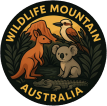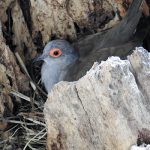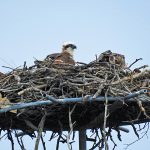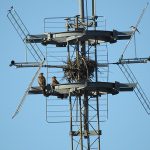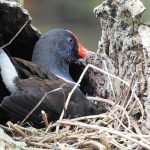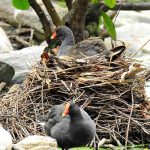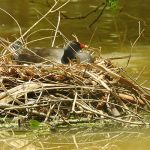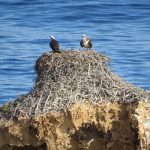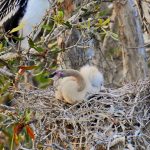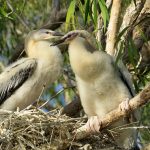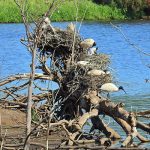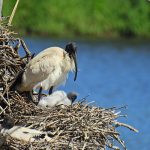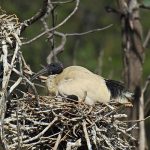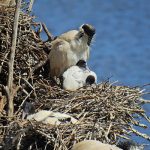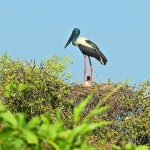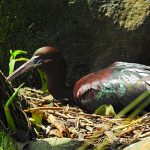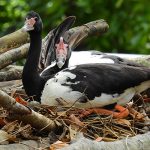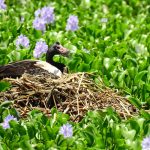PLATFORM NESTS
Australia’s birdlife is wonderfully diverse, and among its many nesting strategies, platform nests stand out for their simplicity and ingenuity. These structures may not be as elaborate as some woven nests, but they offer important benefits to the birds that build them.
What Are Platform Nests?
Platform nests are shallow, often loosely arranged structures built above the ground, usually in trees, shrubs, or sometimes on ledges and vegetation over water. These nests are relatively flat, sometimes with a slight depression in the centre to hold eggs and chicks. Unlike deep, cup-shaped nests, platform nests provide a broad foundation that supports the birds’ eggs and growing chicks.
Why Do Birds Build Platform Nests?
Australian birds construct platform nests for a variety of practical reasons:
- Simplicity and Speed: These nests are relatively quick and easy to build, which can be an advantage during the breeding season.
- Adaptation to Environment: Many birds that nest in open or watery habitats (such as wetlands) use platform nests because the structure works well above water, on branches, or in trees with broad, horizontal limbs.
- Reusability: Platform nests can often be reused and refurbished for several breeding seasons.
Materials Used in Construction
The materials selected for platform nests largely depend on what is available in the bird’s environment, but commonly include:
- Twigs and sticks: The main framework of the nest is made up of interwoven sticks and twigs.
- Leaves and bark strips: These help create a more solid and insulated base.
- Reeds and grasses: Especially in wetlands, birds may use these to provide softness and stability.
- Other available items: Sometimes, birds incorporate human-made materials or feathers for extra insulation or support.
Examples of Australian Birds That Build Platform Nests
| Species | Nest Location | Typical Materials |
|---|---|---|
| Australian White Ibis | Trees near wetlands | Sticks, reeds, grass |
| Australasian Darter | Overhanging tree branches | Sticks, leaves |
| Black Swan | Ground near water | Reeds, grass, aquatic plants |
| Yellow-billed Spoonbill | Trees or shrubs over water | Sticks, leafy branches |
| Osprey | Tree branches or cliffs | Large sticks, seaweed |
Safety and Design Considerations
Platform nests strike a balance between accessibility and protection:
- Elevation for Safety: Most platform nests are built off the ground, whether in trees, shrubs, or on raised structures. This elevation helps protect eggs and chicks from ground predators such as snakes or mammals.
- Camouflage: Nests are often constructed in places where the materials blend into the natural surroundings, helping to conceal them from predators and human disturbance.
- Stability: The broad, flat nature of platform nests provides a stable surface that can hold larger eggs and fast-growing chicks, even in windy conditions.
- Water Access: Birds that nest above water, like the Black Swan or Ibis, use platform nests to keep eggs dry and out of reach from aquatic predators.
Conservation Insights
Platform nest builders play vital roles in their ecosystems. Many wetland birds that use these nests help maintain habitat balance and are sensitive to environmental change. Loss of wetlands and forested areas impacts these birds’ nesting opportunities, so protecting their habitats is essential for their survival.
Platform nests, though modest in appearance, are remarkable examples of adaptation and resourcefulness in Australian birdlife. From the reed beds of wetlands to the branches of river gums, these nests provide safety, comfort, and a secure start for countless young birds. Protecting the habitats where these nests are built helps ensure the continued diversity and beauty of Australia’s avian residents.
